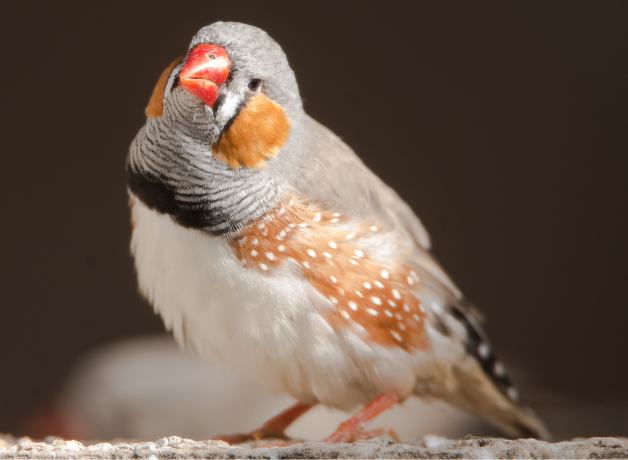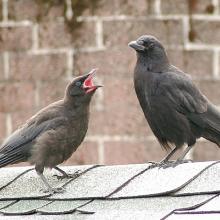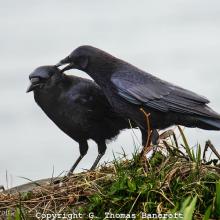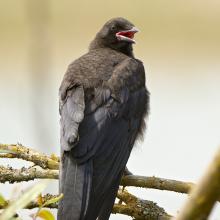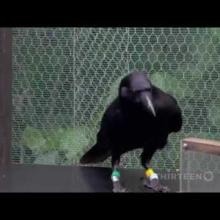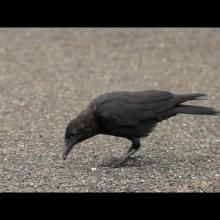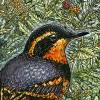

Join BirdNote tomorrow, November 30th!
Illustrator David Sibley and actor H. Jon Benjamin will face off in the bird illustration battle of the century during BirdNote's Year-end Celebration and Auction!
In this episode, neuroscientist Lola Neal explores how birds are used as models to understand many neural processes, as they have cognitive abilities comparable to those of the cleverest mammals. Studying vocal learning and imitation in songbirds like Zebra Finches has helped researchers explore how language is acquired, an important topic in human infant development and beyond.
BirdNote®
If Someone Calls You 'Birdbrain,' Say Thanks
Written by Lola Neal
This is BirdNote. I’m Lola Neal, and I’m a neuroscientist.
We’ve all heard the term “birdbrain,” a pejorative phrase meant to describe a person as stupid or foolish.
But in neuroscience, birds are used as models to study many neural processes, as they have cognitive abilities comparable to those of the cleverest mammals.
[American Crow calls]
Birds have exhibited surprisingly complex behaviors that pique the interest of scientists. Pigeons can be trained to complete tasks, corvids like ravens and crows appear to experience self-awareness, and songbirds use syllabic songs to communicate with each other..
Studying vocal learning and imitation in songbirds like Zebra Finches has helped researchers explore how language is acquired, an important topic in human infant development and beyond.
[Zebra Finch calls]
Much like how an infant’s babbling becomes simple sounds and words, which then becomes complex language in children and adults, juvenile songbirds learn the songs of their parents, with syllables as a building block.
[Song Sparrow subsong – disorganized singing]
Over time, these syllables can then be rearranged if needed, for example, to imitate another sound they hear.
[Song Sparrow adult song]
Scientists are working to understand how avian brains process, remember, and reproduce vocalizations. Not only will this information help scientists and the public understand the complexities of bird behavior, it even creates opportunities to better understand human language development and acquisition.
The underestimated bird’s brain is an incredibly powerful tool for neuroscientists, and has given us insights that connect humans and birds in new and exciting ways.
###
Producer: Mark Bramhill
Managing Editor: Jazzi Johnson
Managing Producer: Conor Gearin
Content Director: Jonese Franklin
Bird sounds provided by The Macaulay Library of Natural Sounds at the Cornell Lab of Ornithology, Ithaca, New York. American Crow ML168976931 recorded by Darrell Peterson, Zebra Finch ML169580761 recorded by Eric R. Gulson C., Song Sparrow ML178907841 recorded by Jay McGowan, and Song Sparrow ML94426 recorded by Wil Hershberger.
BirdNote’s theme was composed and played by Nancy Rumbel and John Kessler.
© 2024 BirdNote May 2024
Narrator: Lola Neal
ID# neuroscience-01-2024-05-27 neuroscience-01

